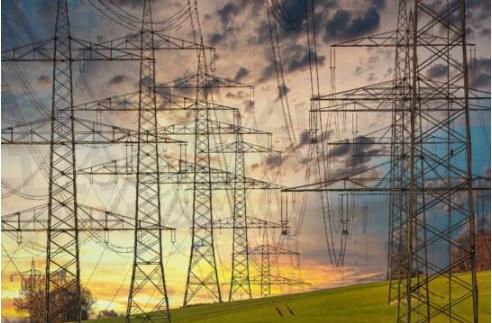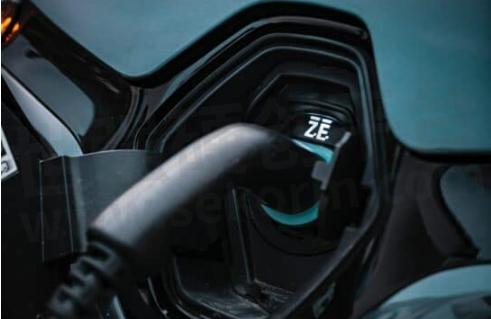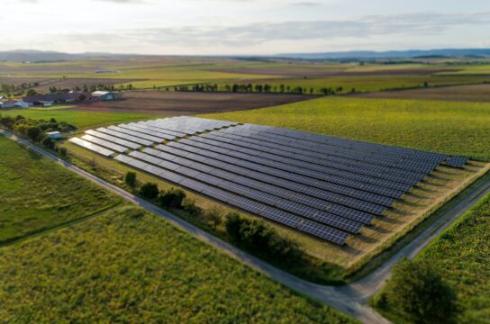Trends in Renewable Energies Increasing, TELE performance sensor Implements IoT projects to fit for a New Energy Age

According to the International Energy Agency (IEA), global energy demand will increase by a quarter by 2040 because, on the one hand, the world’s population will grow by 1.7 billion people and, on the other, incomes and thus the ability to consume energy are likely to rise. Although the expansion of renewable energies will not be sufficient to completely dispense with coal and gas, the energy turnaround will nevertheless enable rapid development opportunities for photovoltaics, wind, hydrogen and co. Sow, photovoltaic systems with a total output of 18.2 gigawatts were newly installed in Europe in 2020. This is a growth of 11 percent compared to the previous year.
Energy balancing trend
The rapid change in the supply landscape, toward more renewable energy, is impressive, but in many cases it is outpacing the expansion of the grid infrastructure, putting the stability of the power grid in jeopardy. Until a few years ago, Europe supplied itself primarily through a few thousand large power plants. In the meantime, millions of photovoltaic and wind power plants have been connected to the grid. This affects the interconnectedness and complexity of the overall system and leads to a different, much more dynamic system behavior. Almost everywhere, for example, there is a lack of storage capacities that can compensate for fluctuations in generation, such as from wind or photovoltaic plants. In addition, there is no uniform concept of what the electrical grids of the future should look like. Thus, power grid problems are solved differently from grid to grid, or from country to country. This makes it much easier for the grid to become unstable and increases the fear of blackouts, for example in some parts of the USA, where the grid infrastructure urgently needs to be modernized. But even Europe only narrowly missed a blackout in January 2021 due to a frequency drop caused by a grid disconnection in the supply network. Austria has a special position here, as it has many storage power plants and pumped storage power plants that can compensate for fluctuations locally. With the grid and system protection NA003-M64 for safe grid disconnection of renewable energy generation plants, TELE makes an important contribution to grid stability.

Trend vehicle to grid
The integration of many large electricity consumers, such as charging stations for electric vehicles, also places demands on the capacity of electricity distribution networks as well as their stability. At the same time, electric vehicles offer a great opportunity because in the future, when they are connected to the grid, they could also be used as electricity storage devices – keyword “vehicle to grid”. E-cars in parking position could be intelligently networked and controlled to form a virtual super power plant that absorbs surplus electricity and feeds it back into the grid as needed. This is still pie in the sky, but researchers are currently working on intelligent charging stations that can supply and receive electricity according to grid demand.

Trend energy communities
The Renewable Energy Expansion Act, or EAG, has recently made it possible to establish energy communities to sell privately generated electricity locally. In an energy community, different players can come together and share generated energy; in other words, consume it jointly, store it and/or sell it. The use of smart meters and the measurement and storage of quarter-hourly values (opt-in) are the prerequisites for billing within the energy community. A number of pilot projects for energy communities are already underway in Austria, most of which are organized through associations or cooperatives, not for profit. Customers of the energy communities receive a lower electricity price because the use of higher grid levels, the electricity levy and the green electricity subsidy are omitted. In return, they pay a small administrative fee to the energy community. At present, energy communities often still struggle with bureaucratic hurdles in their cooperation with grid operators and billing. Nevertheless, this concept could develop promisingly.
Trend Floating PV and Agricultural PV
Floating PV, the use of floating photovoltaic systems on water, offers the advantage of being able to use very large areas for the energy transition. In addition, there is the advantage of a higher PV system output due to the water cooling as well as the simple installation. Owners of artificial lakes can use the plants as an additional source of income. On the sea, combination with offshore wind farms would also be possible in the future.
Agri-photovoltaics (Agri-PV) uses land simultaneously for crop production and solar power generation. For example, in one project in the Netherlands, raspberry bushes on an area of 3.2 hectares are covered at a height of 2.50 meters with more than 10,000 semi-transparent PV modules with a capacity of 2.7 MW. The PV modules allow enough sunlight to pass through for the plants while protecting them from extreme weather such as hail, heavy rain or direct sunlight. This allows the operator to dispense with foil protection tunnels, which had to be disposed of every six years.

Trend IoT energy management
IoT – the intelligent networking of machines and systems – can help increase energy efficiency and optimize energy consumption. In this way, the technology contributes to the fight against climate change with countless applications and saves cash. Many components in the energy sector are now capable of communication. For example, many users already benefit from smart meters, smart HVAC solutions or smart city systems. It becomes possible not only to visualize and analyze energy consumption, but also one’s own energy generation, for example with a PV system. A dashboard gives users an overview of all the figures and they can adjust their behavior so that they consume energy when they are generating their own energy or when the tariffs are particularly favorable. This opens up great savings potential, especially for companies, when they optimize their building automation. In addition, IoT can also be used to prevent system failures – the keyword here is “predictive maintenance”. In this case, a system automatically alerts maintenance personnel if a deviating pattern occurs in the plant and can even be serviced remotely under certain circumstances. Many plants are now being retrofitted with retrofit components to make them fit for a new energy age. TELE implements IoT projects for customers according to individual requirements.

TELE performance sensor eCap
With the new communication-enabled performance sensor eCap, TELE already has a powerful component for all these trends in its product range. The eCap transmits the measured data via ModBus to the cloud and, with its flexible functionality, can be used in many different applications. It is the element that converts the electrical voltage, current and power into data for digital display and in this way enables further processing and display of the data.
- +1 Like
- Add to Favorites
Recommend
- New firmware version for TELE eCap Performance Sensor
- Authorized Use of the c(UL)us Mark for TELE‘s Performance Sensor eCap
- eCap Performance Sensor From TELE Haase Helps toSave Energy, High Accuracy Up to 0.01 %
- Unlock Peak Performance and Efficiency with the eCap® Energy Sensor
- Grid And System Protection NA003-M64 from TELE Meets Belgian Standard C10-11
- TELE Timers Protect Q-Pac Fans
- News on TELE Grid&System Protection: Version “I” Available
- TELE Visits HAZET to Optimise the Grid And System Protection NA003
This document is provided by Sekorm Platform for VIP exclusive service. The copyright is owned by Sekorm. Without authorization, any medias, websites or individual are not allowed to reprint. When authorizing the reprint, the link of www.sekorm.com must be indicated.


















































































































































































































































































































































































































































































































































































































































































































































































































































































































































